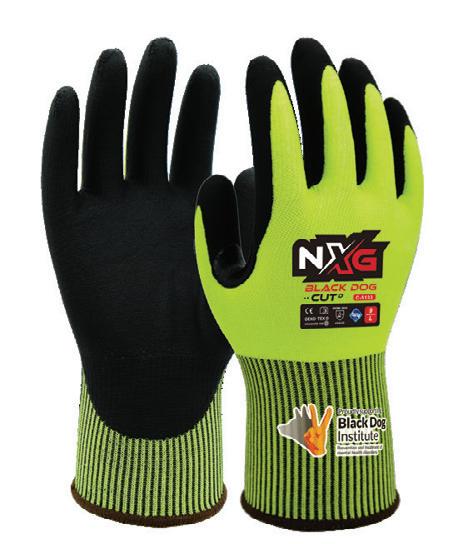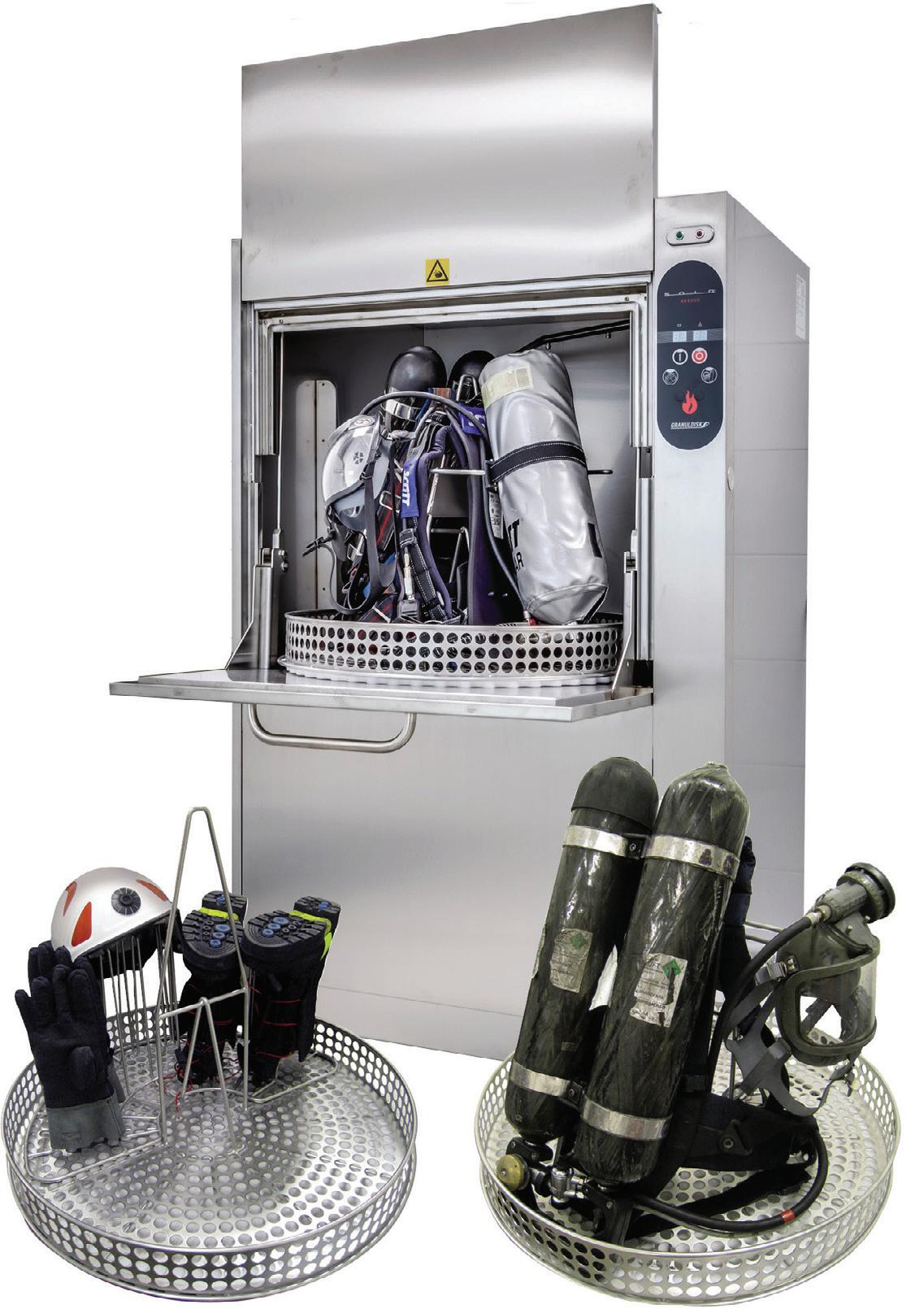
11 minute read
CNC machining — 5 ways to increase it without sacrificing safety
CNC MACHINING
5 WAYS TO INCREASE IT WITHOUT SACRIFICING SAFETY
Emily Newton, Editor in Chief, Revolutionized
The use of computer numerical control (CNC) equipment boosted output in machine shops because the associated processes function through computer programming rather than wholly through an operator’s manual steps. Even so, there are ongoing steps to increase efficiency. Here are five ways to do that without putting people’s safety at unnecessary risk.
1. Use the right tools for the job
Some machine shop operators make the costly mistake of purchasing the least expensive CNC tools available and then altering them to perform outside of their intended purposes. They believe that such alterations will keep efficiency levels high without requiring them to make proper upgrades. However, this approach can cause accidents and other unintended consequences, such as wasted materials. Safety managers should remind shop employees to never use CNC machines in ways that go beyond the manufacturers’ specifications, even if doing so initially seems like a way to achieve better productivity.
2. Bring connected sensors to the process
The ‘Industrial Internet of Things’ has proved crucial for helping professionals in various industries increase efficiency while keeping safety levels high. For example, smart sensors can spot abnormalities that humans may miss. Additionally, smart sensors
©stock.adobe.com/au/Quality Stock Arts
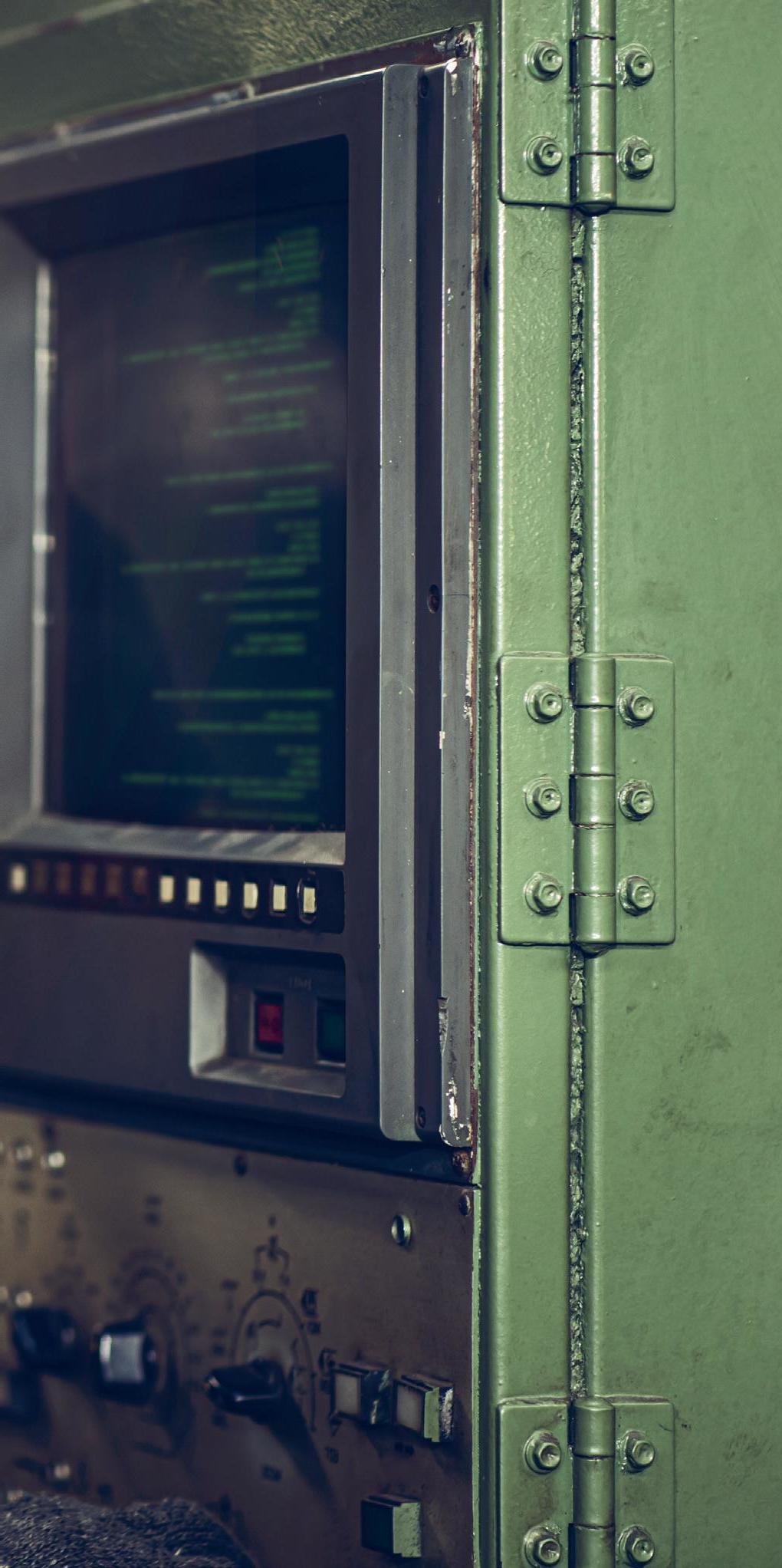
also unlock possibilities in machine-to-machine communication. If a machine shop automates parts of the process, such as handling finished pieces, efficiency levels stay high while injury instances remain low despite the higher output potential.
3. Consider getting a Quality Standard Certification
Focusing on maintaining high quality in a CNC machine shop tends to have positive effects on safety, too. For example, if a machine shop gets ISO 9000 certified, more accountability and improved process standardisation are among the benefits. Certain industries also have specific ISO standards to follow. For example, AS9100 is for the aerospace industry. It encompasses the ISO 9000 stipulations, plus additional quality and safety requirements.
Components of the ISO 9000 standard encourage companies to measure improvements, enable open discussions about problems and evaluate the individual performance of employees. Together, priorities like these can make CNC machining safer and more efficient. Getting certified is not the only way to improve safety, of course. However, it can give company leaders more direction as they make organisations more resilient.
4. Focus on continuous improvement
Sticking to the same processes over time is not always the best way to maintain efficiency or safety. For example, a company may initially have a reactive maintenance strategy, meaning that people only tend to machines once issues become apparent. However, using a real-time, preventive approach can give equipment more uptime while emphasising safety. Prioritising continuous improvements is an excellent way for company leaders to see what’s working well or requires more attention.
At Levy’s Machine Works, managers invested in continuous improvement, bringing a 15–20% revenue boost and cutting operational losses by almost 11%. Ongoing audits look at almost 75 aspects of the workflow, keeping everyone more aware of the need to maintain safe practices and identify environmental dangers. For example, company leaders realised that randomly placed drill holes created slipping hazards when material escaped from the spill tray. Using a drill template for the barrels tackled that problem while reducing annual losses.
5. Know when to increase investment in a particular machine
Thorough maintenance strategies go a long way in keeping CNC machines safe and performing well. However, it’s not always sufficient to keep repairing one, especially if it’s old or has a history of safety issues. In such cases, safety managers must decide when to take more extensive action. For example, retrofitting a CNC machine with a newer control can make it easier to program and more user-friendly overall. Older CNC machines may also pose additional safety hazards.
Most newer models have door safety features that don’t allow people to reach inside until the machine stops running. However, older equipment often has locks that are easy to override, defeating the purpose of putting them on a machine at all. Another option is to repurpose a machine to make it fit a different need. People who choose this route should always get professional guidance. Trying to repurpose a machine with the sole goal of cutting costs raises the risk of accidents.
Welcome worker feedback
Making CNC machining more efficient while maintaining safety should be an ongoing effort rather than something leaders do quickly to address a suddenly apparent problem. When employees see that safe practices are foundational elements of a workplace’s operations, they’ll be more likely to follow all rules and not take any shortcuts that could put them at an elevated risk.
Besides considering these five tips, safety managers should engage in regular conversations with workers. Asking them about any dangers they’ve spotted or inefficiencies that continually frustrate them could illuminate other problem areas to target. When workers feel heard during discussions about achieving safety and a high output, they’ll feel more willing to contribute ideas about how to reduce accidents while improving productivity.

Gas detection program
Gas detection plays a fundamental role in safeguarding workers and worksites from flammable and toxic gases, which are invisible dangers. MSA Safety io gas detection program is supported by seamless connectivity with a track record of safety and support. It also features fastresponding sensors that are durable and low-maintenance.
Drive safety improvements and accountability with a connected gas detection program.
The digital transformation is well underway and digital services are becoming more important than ever in the gas detection industry, creating both new opportunities and challenges. The MSA Safety io cloud solution will support users in this digital transformation and help to improve safety outcomes.
MSA Australia Pty Ltd
au.msasafety.com
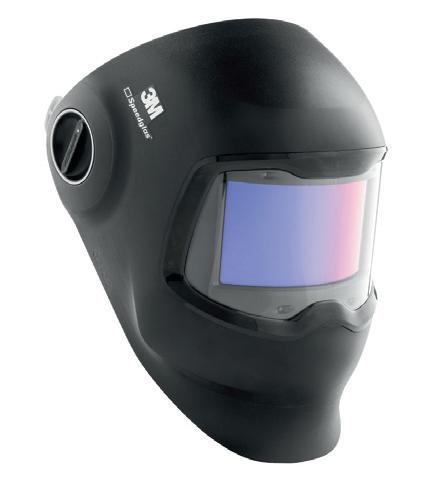
Monitor/defibrillator

The ZOLL X Series Advanced monitor/defibrillator helps providers manage patients more effectively by providing the clinical data Emergency Medical teams need to improve outcomes. The X Series Advanced comes with new features, including Real BVM Help, TBI Dashboard, RescueNet Live (not included) and enhanced CaseReview functionality.
ZOLL has introduced Real BVM Help, a technology that is only available on its new X Series Advanced monitor/defibrillator. Real BVMP Help provides clinicians with real-time ventilation feedback on volume and rate for both intubated and non-intubated patients.
The ZOLL X Series Advanced with Real BVM Help gives providers target and delivered ventilation volume, target and delivered ventilation rate, and a ventilation quality indicator and countdown timer. Real BVM Help works with any standard-sized commercially available airway management device for intubated and non-intubated patients.
For cardiac arrest patients, the X Series Advanced offers Real CPR Help and Real BVM Help, giving providers simultaneous real-time feedback on CPR and ventilation quality. When used with adult ZOLL CPR electrodes, the X Series Advanced displays the Real BVM Help Dashboard next to the Real CPR Help Dashboard.
The X Series Advanced monitor/defibrillator features a TBI Dashboard, to enable rescuers to see trending data on critical parameters to treat and manage traumatic brain injury (TBI) patients. Integrated into the TBI Dashboard, Real BVM Help guides clinicians in providing manual ventilations to intubated and non-intubated patients.
RescueNet Live, a telemedicine solution from ZOLL, enables clinicians to view real-time data from the X Series Advanced at remote locations via a cellular or Wi-Fi connection. RescueNet CaseReview enables providers to view data from the X Series Advanced post-case for effective QA/ QI. It can send files directly to secure systems for performance focused debriefing. Access to data, including ventilation and CPR performance, is as fast as opening a web browser.
ZOLL Medical Australia
www.zoll.com/au

Welding helmet
Generation 5 is the latest collection of 3M Speedglas welding helmets and showcases a range of features.
Part of this collection is the Speedglas G5-02, which was more than 20 years in the making and is reportedly the world’s first welding helmet providing a curved autodarkening lens that creates wider views in a slimmer helmet that follows the curvature of the head for optimal weight distribution.
The G5-02 lens has an all-new light state of 2.5 to maximise the effect of True-View optics and provide lighter, brighter and more realistic colours. Overall, the G5-02 sets a standard for precision viewing for professional TIG welders involved in high-performance, critical work.
AWS Pty Ltd
www.awsi.com.au
Protective face shield
The RFU837 UniMask protective face shield provides a high level of breathing protection with enhanced inner airflow regulation and a visor with good optical and mechanical features. The face shield features a TH3 class of breathing protection, with an anti-fog/anti-scratch coating. It has good optical quality (EN 166 class 1) and is also safety helmet compatible. Easy to use and adjust, the face shield is also lightweight, weighing 380 g, with a neoprene or textile face shield option. The visor also features high mechanical resistance.
The face shield has a range of applications and is suitable for the use in refineries, and in the building, automotive and shipbuilding industries. The UniMask protective face shield also facilitates quick and easy changing of the visor; in case the visor needs to be replaced or separately cleaned, it can be removed easily and attached back to the hood using two separate locking knobs.
The UniMask also features a quickly interchangeable face seal with easy maintenance. The face seal provides a secure and comfortable fit for the wearer, due to a fast click-in system that enables the face seal to be quickly removed and attached back. The face seals can be washed in a washing machine and even dried in the dryer. UniMask also regulates inner airflow, and can be used with a range of standard safety helmets to provide a handy solution of head protection combined with protection of the face and respiratory system.
TechWare Supplies
www.maxisafe.com.au



CASE
STUDY Access systems facilitate staff safety for port authority
CELEBRATING YEARS
©stock.adobe.com/au/Idanupong
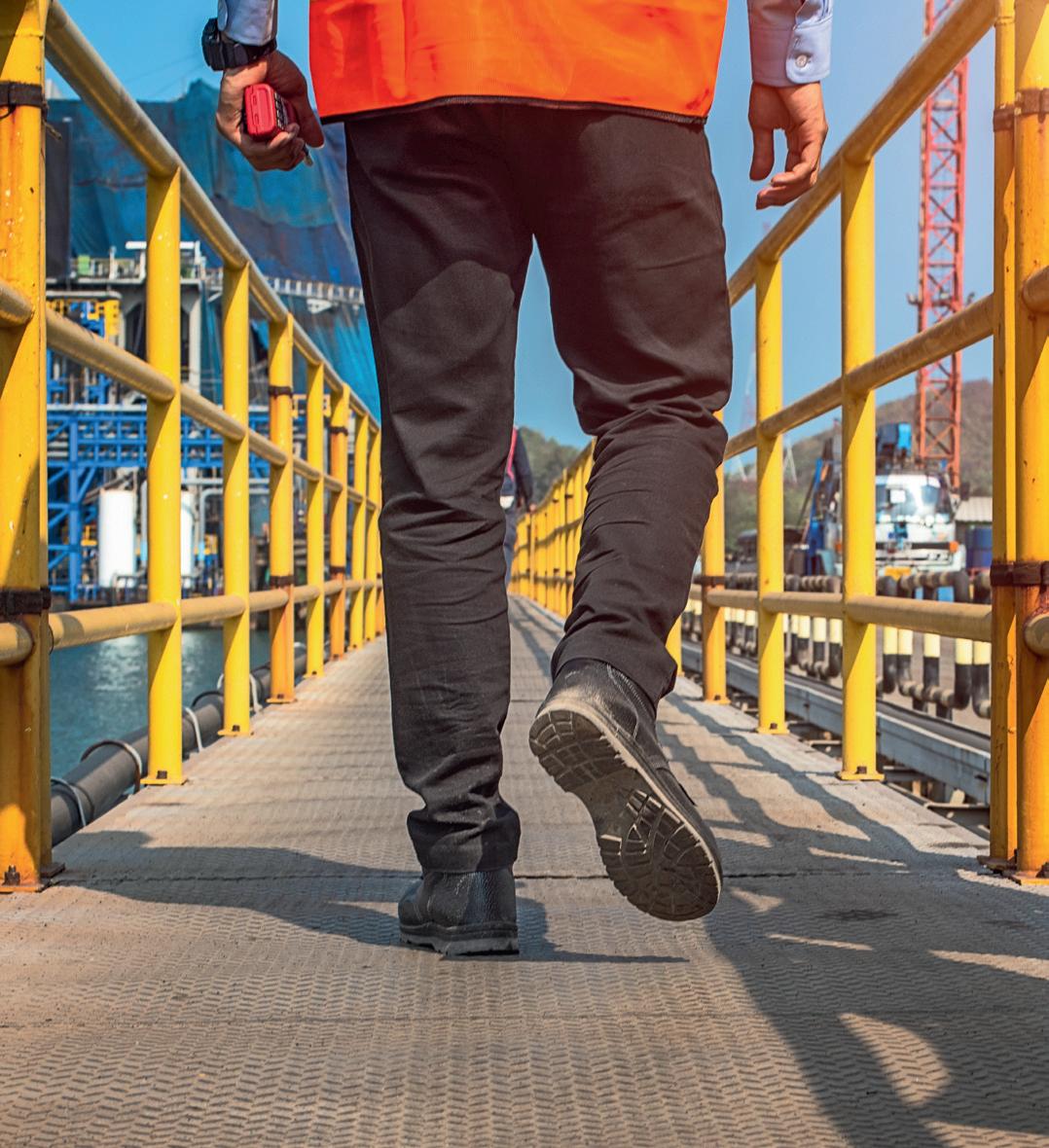
The Port Authority in Western Australia was established following the Ports Legislation Act 2014, which consolidated seven of Western Australia’s eight port authorities into four new regional port authorities. The Port Authority strives to become the global leader in port planning, operations and marine services, and continuously improves its operations for the benefits of customers, stakeholders and communities. The Port Authority engaged Treadwell to provide new handrails as well as an access ramp, to facilitate safe access for staff.
In response, Treadwell supplied its Access Systems GratEX FRP Mini Mesh Grating and RailEX Round Handrails. Treadwell overcame many challenges over the course of the project. The exposed marine environment accelerated corrosion on structures in the vicinity. However, with their track record of performing beyond expectations in similar environments, Treadwell FRP products provided durability and dependability.
The chosen material for the handrails also had to have low thermal conductivity so that it would be safe to use even in high temperatures, while remaining robust in the outdoor environment. The RailEX Round handrails were assembled accordingly, using a zero-weld method that reduces the chance of corrosion. RailEX is also a suitable alternative to metallic handrails and offers electrical transparency, while being nonconductive in nature.
The Port Authority also required the selected grating to be anti-slip, to ensure the safety of users. Treadwell fabricated and modified FRP onsite, omitting any need for a hot works permit. The lightweight and easy-to-install nature of the product made FRP very manageable during construction. Any system utilising FRP is also virtually maintenance free, due to the nature of FRP, thereby minimising maintenance costs.
Treadwell Group Pty Ltd www.treadwellgroup.com.au
Westwick-Farrow Media A.B.N. 22 152 305 336
www.wfmedia.com.au
Head Office: Unit 7, 6–8 Byfield Street, (Locked Bag 2226) North Ryde BC NSW 1670, AUSTRALIA Ph: +61 2 9168 2500
Editor: Dr Joseph Brennan ss@wfmedia.com.au
Editorial Assistant: Ashna Mehta
Publishing Director: Geoff Hird
Art Director/Production Manager: Julie Wright
Art/Production: Colleen Sam, Veronica King
Circulation: Dianna Alberry circulation@wfmedia.com.au
Copy Control: Mitchie Mullins copy@wfmedia.com.au
National Group Sales Manager: Nicola Fender-Fox Ph: 0414 703 780 nfender-fox@wfmedia.com.au
Industrial Sales: Vanessa Blanc Ph: 0450 197 770 vblanc@wfmedia.com.au
If you have any queries regarding our privacy policy please email privacy@wfmedia.com.au
Subscriptions: For unregistered readers - price on application
ISSN 1447-8277 PP 100007391
Printed and bound by Bluestar
All material published in this magazine is published in good faith and every care is taken to accurately relay information provided to us. Readers are advised by the publishers to ensure that all necessary safety devices and precautions are installed and safe working procedures adopted before the use of any equipment found or purchased through the information we provide. Further, all performance criteria was provided by the representative company concerned and any dispute should be referred to them. Information indicating that products are made in Australia or New Zealand is supplied by the source company. Westwick-Farrow Pty Ltd does not quantify the amount of local content or the accuracy of the statement made by the source.

